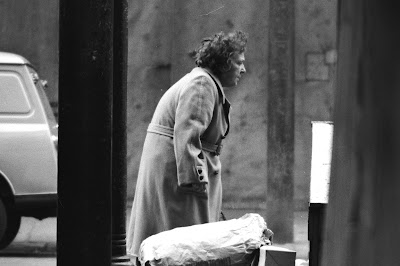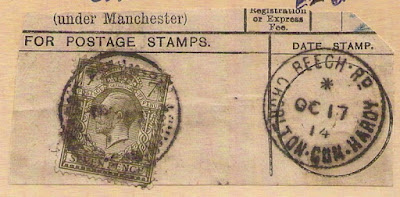Numbers 44 to 46 Princess Street is one of those grand late Victorian buildings which still speak of the prosperity of 19th century Manchester.
 |
| Our building, 1973 |
It stands on the corner of Princess and Portland Streets, stretches down to Harter Street and occupies a big chunk of Portland Street consisting of five floors with extensive cellars.
In 1886 it was home to S & C Nördlinger and a series of other businesses.
Its fortunes have waxed and waned over the 20th century, while in the last two decades parts of the block have been occupied by a nightclub, along with Turkish and Chinese restaurants.
I will have passed it heaps of times and not given it much thought other than that there always seems to be a bit of scaffolding on part of it.
And yesterday was no exception which would have sealed my indifference were it not for the curiosity of my companion who having clocked the open iron gates leading into a courtyard suggested we venture in.
It is as he said an opportunity not to be missed, despite the consideration that a] we might be trespassing and b] someone might just close those gates.
 |
| Looking out from the courtyard on to Princess Street, 2025 |
Neither of which happened and instead we were offered up a heap of photo opportunities, including the tiled walls of the interior building and the landing bays replete with an old and tired looking crane.
 |
| In 1886 |
Looking at my Goad’s Fire Insurance Map of 1886, the original courtyard extended almost the full length of the building with multiple points for unloading goods into the businesses.
And here was the first surprise, because an arm of the Rochdale Canal ran into the eastern side of the building running behind Harter Street.
That arm predated our building and had once suppiled a collection of coal and timber yards, the Portland Street Saw Mill and James Lord's Cotton Mill.
And originally the arm continued all the way to Faulkner Street.
But this last bit had been filled in when Portland Street was extended down to join Oxford Street in the 1870s just as Princess Street was allowed to grow and absorb what had been David Street taking it all the way to Brook Street.
Now that I accept is a tad confusing, suffice to say the real story remains the building.
Once I guess that courtyard would have been a hive of activity, but yesterday we were alone with just the ghosts of past carters and warehousemen for company, not that either of us stopped to let our imagination roam.
 |
| That courtyard, 2025 |
But sitting here today I decided to explore the partnership of S & C Nördlinger, and I glad I did. Mr. Charles Nördlinger was 48 in 1886 and was a
"Naturalized British Citizen" having been born in Italy in 1838. His wife Louise also gave her birth place as Italy and in one of those interesting twisty turney stories, one of her sisters was born in Switzerland and her parents came from Germany.
 |
| Lincoln Lodge, 1894 |
In 1881 the Nördlinger's lived at 120 Plymouth Grove, which was named Linclon Lodge and stood on the corner of Lincoln and Plymouth Groves.
It's gone now and long ago became Swinton Grove Park, but maps from the 1890s show the property as one of a pair of semi detatched houses surrounded by open land, which four decades earlier had been part of a very attractive estate of fine houses large gardens and fields.
Just what their house looked like is lost but some idea of just how grand it might have been can be guauged by its neighbour which was the home of Elizabeth Gaskell.
All of which is a long way from the Rochdale Canal and Princess Street, but that is just where stories go.
 |
| The home of Elizabeth Gaskell |
Location; Princess Street
Pictures; the interior of the courtyard 44-46 Princess Street, 2025, from the collection of Andrew Simpson, the building in 1886 from Goad’s Fire Insurance Maps, and Lincoln Lodge, 1894 from the OS of Manchester & Salford, 1894, courtesy of Digital Archive, http://www.digitalarchives.co.uk/ and the corner of Princess and Portland Streets, 1973, m05264, courtesy of Manchester Libraries, Information and Archives, Manchester City Council, http://images.manchester.gov.uk/index.php?session=pass and the home of Elizabeth Gaskell, 2020, courtesy of Google Maps


















































